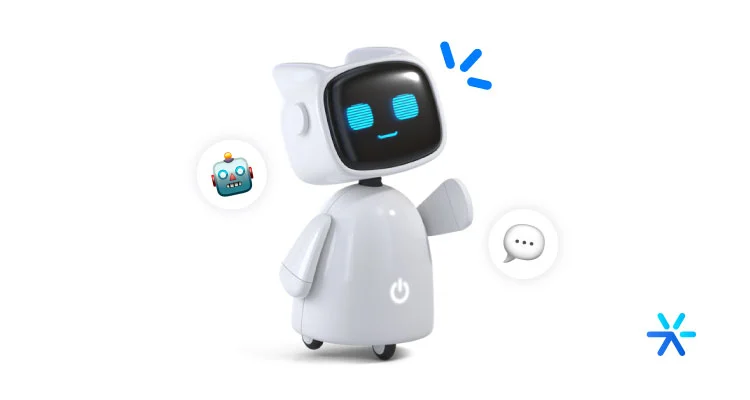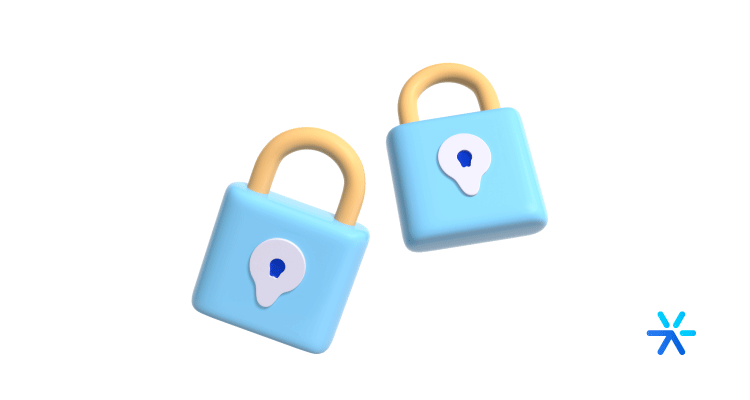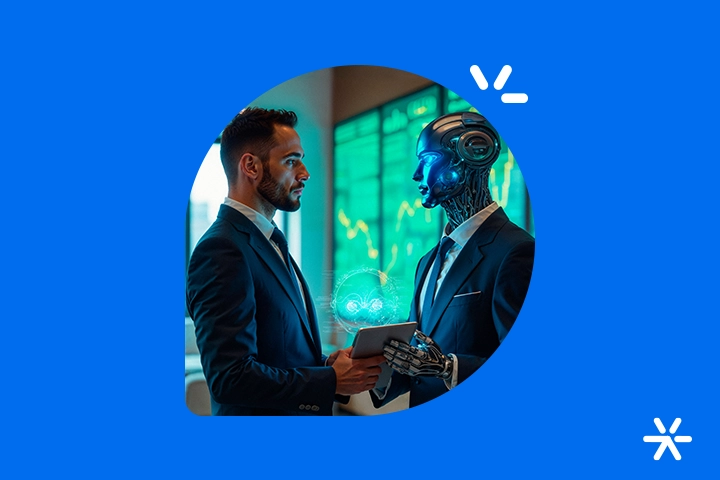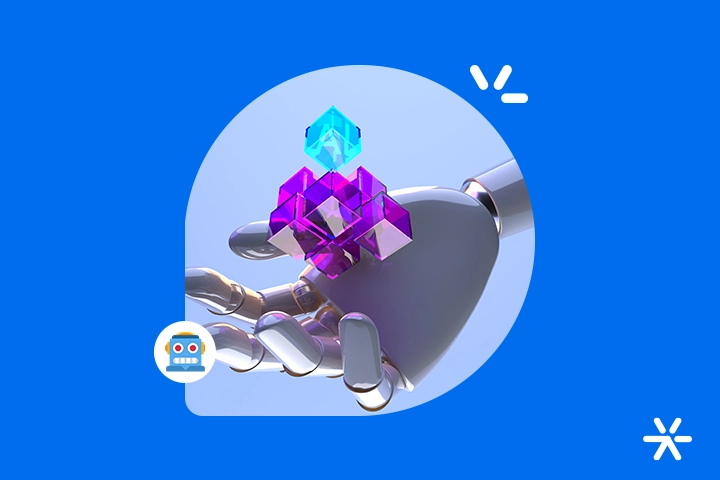What Are AI Agents? Can I Hire One Yet?
We can’t yet hire the AI agents that the future promises, but it’s exciting to be part of this moment in history and witness the early developments in that direction.
Of course, it’s already possible to hire AI agents today—simpler ones designed for very specific functions, which are still quite limited.
AI agents are emerging with the promise of becoming true members of your team, handling repetitive and simple tasks, or even slightly more complex ones that, in most cases, have exact answers.
If you don’t yet know what AI agents are, this article explains it well. If you already do, we provide informed predictions for the future. And if you’re already interested, we offer some recommendations.
Time to grab a coffee, because today’s article is a bit long—but very interesting.
Let’s get started!
What Are AI Agents?

There is some debate over what AI agents truly are and what they will eventually become.
But the general understanding is that AI agents are Artificial Intelligence systems capable of performing semi-complex tasks without human interference.
Let’s consider an example: you’re using Midjourney to generate images. You need to create a prompt and send it to the tool. Then, it delivers a result.
An AI agent would act as the bridge between Midjourney and the task you need done. The agent could generate the necessary prompts based on parameters you set.
You could say: “Agent, I need you to produce images all day. Every hour, look through the images you’ve generated for the color red. Every time it appears, email it to our art director.”
See the difference? That’s why these systems are called AI agents: they have agency.
But even this definition and example feel simplistic when we consider what AI agents are (or will be) capable of.
Here are some additional insights:
The AI Agent Emerges to Be Rational
Understanding AI agents becomes less mysterious when we consider that their development aims at something close to rationality.
Not human rationality, but something within that domain.
This trait mainly comes from autonomy. An AI agent will be able to understand sequences of tasks within a larger job and execute them to complete the assignment.
This independence allows you, for example, to train an AI agent to input data into a spreadsheet.
Another example: imagine a lead capture and nurturing system. An AI agent could be configured to transfer data from your lead generation platform to a specific spreadsheet.
Some systems already handle that organization, but if you maintain a spreadsheet for urgent approaches, the agent could populate it automatically.
This leads us to another important feature of AI agents: the ability to create systems.
AI Agents Enable the Creation of Systems
The previous example is a system. An AI agent capable of understanding urgency parameters in lead scoring and populating a spreadsheet—or even emailing the sales team—is a system.
Ten years ago, people were building systems to do exactly that. In fact, that’s one of the main functions of marketing platforms and CRMs.
When we think in terms of systems, we understand them as software-based solutions designed to carry out specific tasks that were once done manually.
An AI agent becomes a system because it mimics how humans solve problems.
While our example was broad, AI agents shine in their specificity. Think of any structured digital workflow in your company that involves humans. It could likely be complemented by an AI agent.
AI Agents Are Bridges to AI Systems
The most powerful use of AI agents is actually in overseeing integrated systems—whether or not those systems use AI.
Here’s a simplified version of how this could work, based on our lead scoring example:
- The AI-powered chatbot offers a deeper resource to a visitor, who accepts it and becomes a lead;
- The marketing platform organizes the leads in your system and applies lead scoring based on your defined parameters;
- An AI agent is deployed to detect lead scores that require an active approach (e.g., phone call) within the next five minutes;
- The AI agent pulls the relevant lead information from spreadsheets and the marketing platform, just like a human would;
- The AI agent emails the urgent leads to the sales team for immediate follow-up.
Some marketing platforms do offer notifications, but usually not with this level of urgency. At best, you can create mini-rules to notify by email whenever a lead hits a certain score.
But this example illustrates how the AI agent works: it serves as a bridge between your systems (AI or otherwise) and your operation.
So now we understand what AI agents are and what they do, right?
We also learned quite a bit about how they work and their role in marketing strategies.
But now we need to look at what AI agents can’t do—and never will.
And we also need to distinguish between truth and hype in the AI agent offerings you see out there.
One step at a time. There’s still a lot of article ahead. Let’s go together!
Do AI Agents Already Exist?

Yes, AI agents are already being built, both as commercial services and for specific uses within companies.
In fact, large companies are testing AI agents in their operations right now, as you read this article.
But there’s a difference between types of AI agents being sold. There are general-purpose agents, specific-use agents, and even custom-built ones.
Let’s explore each category below:
General-Purpose AI Agents
These agents are created to perform a wide variety of tasks and are meant for a broad range of users. Typically, they include features like web browsing, writing assistance, task planning, simple process automation, and customer support.
Examples:
- Operator (OpenAI): an agent capable of browsing the web, shopping online, and updating profiles with a high degree of autonomy.
- AutoGLM Rumination (Zhipu AI): a free agent for tasks like travel planning, news reading, and report generation.
These models are great for users seeking flexibility without a very specific application in mind, such as freelancers, small businesses, or curious individuals.

Specific-Use AI Agents
These agents are built for very defined tasks or sectors, such as customer service, investment analysis, content creation, or sales. They tend to be more efficient in the domain they’re designed for.
Examples:
- Manus (Butterfly Effect AI): focused on tasks like stock analysis and website creation, used by companies needing precision and speed for routine tasks.
- Solutions on platforms like AI Agent Store or Agent.ai, which let you buy or use agents for specific roles (HR, marketing, support, etc.).
These are especially useful for businesses looking to automate particular areas, reduce costs, and boost productivity.
Custom AI Agents
These agents are tailor-made for a specific need, workflow, or system. They’re usually developed by specialists or freelancers and integrated directly into the client’s processes.
Examples:
- Freelance services on Fiverr, where you can order a custom agent that interacts with internal systems, specific APIs, or proprietary data;
- Platforms like AI Agent Store, where agents can be customized based on company-specific rules, goals, and data.
What AI Agents Will Never Be Able to Do

AI agent promises are massive. As development progresses, new features are often added—sometimes more in theory than in practice.
But the truth is that AI models, and the very process of creating them, have inherent limitations. And because of that, AI agents will too.
Here we will talk more about what exactly AI agents won’t be able to do. We’ve separated the 5 clearest functions so far:
- Complete autonomy: AI agents are not, in any way, capable of operating completely on their own. It’s very likely they never will be. Due to their nature as integrators of other systems, AIs, and resources, initial programming is necessary. Think of an AI agent as a robot without a physical body—just the software. Someone still needs to tell the robot what it needs to do, or it won’t do anything. Because of this, AI agents also cannot decide for themselves when more complex issues arise, and they freeze or fail;
- Replacing teams: AI agents will replace people, there’s no doubt about that. However, they are nowhere near capable of making very extensive replacements since humans are needed for supervision and decision-making;
- Being infallible: We tend not to call AI failures “failures” but rather “hallucinations.” The truth is when ChatGPT gives you a wrong answer, it’s failing, not hallucinating. This will be even clearer with AI agents, since they don’t just generate articles—they perform tasks;
- Creating other agents: Even an AI agent capable of writing code and assisting in the creation of other simpler systems cannot create its own systems;
- Handling rule changes well: AI agents are not good at dealing with sudden changes in rules. If something changes in the tasks they are performing, they will start to freeze.
How to Have an AI Agent Today?
The best way to have an AI agent today is by looking for a personalized solution for your brand.
Or better said: this is the best way to explain it here in this article, more generally.
It’s possible that AI agents already created specifically for your reality exist or will exist, usually offered online.
But at the moment, the best way to look for and find AI agents is by searching specialized websites that offer various types of AI agents you can imagine.
We made a quick guide to help you understand how to navigate Agent.AI and make your first purchase on the site.
Learn more:
1. Creating Your Account on Agent.ai
- Go to the official site: agent.ai
- Click on “Sign up for free”: you will be directed to the registration page;
- Fill in your details: provide your name, email, and create a secure password;
- Confirm your email: check your inbox and click on the confirmation link sent by the platform.
2. Exploring and Selecting an AI Agent
- Access the marketplace: after logging in, go to the “Agent Network” section to see available agents;
- Use search filters: filter by category, popularity, or specific features to find the agent that best fits your needs;
- Read descriptions: click on agents to get more information about their capabilities and requirements.
3. Acquiring the Chosen Agent
- Click “Get Agent” or “Install”: on the desired agent’s profile, select the option to acquire it;
- Choose the plan: some agents may be free, while others require payment. Select the plan that best suits your usage;
- Complete the purchase: follow the instructions to finish the acquisition, providing payment details if necessary.
4. Installing and Configuring the Agent
- Access the control panel: after purchase, go to the “My Agents” section in your profile;
- Start installation: click “Install” next to the acquired agent;
- Configure preferences: follow instructions to customize the agent according to your needs, such as integration with other tools or setting specific parameters.
5. Testing and Using the AI Agent
- Run an initial test: after installation, use the test feature to ensure the agent is operating correctly;
- Monitor performance: track metrics and feedback provided by the platform to evaluate the agent’s effectiveness;
- Adjust as needed: based on results, tweak settings to optimize the agent’s performance.
So, what did you think of this quick guide on AI agents? Ready to put it all into practice?
We have our own AI agent focused on customer service and answering questions in e-commerce.
It’s the ShopBot Leadster, capable of understanding your categories and products and, when asked, responding to any visitor on your site using natural language.
Try it today by clicking the banner right below. Thanks for reading!








